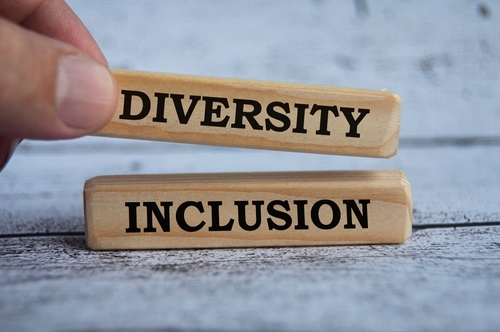We’ve heard a lot about companies’ growing interest in hiring chief inclusion and diversity officers (CIDOs). CIDOs are allocating budgets, mapping out goals, and building programs for inclusion and diversity (I&D) that will impact all employees. According to Glassdoor, I&D executive and leadership roles have more than doubled since June 2020. And according to LinkedIn data, the number of people globally with the head of diversity title more than doubled (107% growth) over the last 5 years. LinkedIn data also shows there’s been a 71% increase worldwide in all I&D roles over the last 5 years. One of these new roles is the I&D program manager, which is ranked third on the 2023 LinkedIn Jobs on the Rise list.
For professionals looking to make an impact on their company’s culture and to learn from leaders in the diversity, equity, inclusion, and belonging (DEI&B) space, the I&D program manager position allows one to empower others while continuing one’s journey of learning and growth. Because it’s a fairly new role for organizations looking to deepen their I&D efforts, here are some considerations for professionals interested in taking on the role:
1. Create an Inclusive Working Environment
Employees come from different cultures, and all have unique lived experiences that shaped who they are today. It’s impossible to understand thousands of people deeply, but it’s important to recognize those nuances and provide a supportive space for them to be authentically themselves.
Remember those nuances when you foster initiatives like employee resource groups (ERGs) to support different communities within your organization. No community is a monolith. When working with these groups, it’s important to keep in mind how intersectional identities (a term coined by Dr. Kimberle Crenshaw) impact different communities and the support you can provide in your workplace. A recent example to consider is the U.S. Equal Pay Day recognition, which occurred on March 14, 2023. This day calculates how far into the year the average median woman must work to have earned what the average median man had earned the prior year. However, if we take a deeper dive into this, we learn that once you break things down for other communities, the gap becomes even more staggering. Equal Pay Day for black women occurs July 27, August 15 for mothers, and all the way to November 30 for native and indigenous women (with other marginalized communities documented along the way).
We must look into intersectionality to truly be able to create an inclusive working environment and hold space for these many nuances.
2. Connect, Connect, Connect
The more people you meet, both inside your organization and outside, the more you can build relationships and identify where support is needed for your employees. Having an open dialogue with employees will build trust and encourage a culture of openness and participation where they feel safe to voice their concerns and be empowered to contribute to each other’s well-being.
I&D professionals should provide the tools and resources employees need to connect and build community. With that said, if the best resources are outside your organization, connect your employees with individuals and organizations that can share knowledge, provide training and education, and foster a safe community space.
Ensure the community spaces allow for healthy debate and create a culture of calling people in, rather than calling people out, to allow community members and their allies to learn and grow together while reducing harm.
3. Reflect on Your Own Biases
Check yourself consistently, and have someone you can count on for a second opinion. Although we’re I&D professionals, we still exist within our own lived experiences and personal beliefs. It’s important to constantly learn and grow; dig deep into your own biases, outlooks, and opinions; ask questions; and have an accountability partner. A best practice is to pause and question your thoughts before acting on them. Was your thought caused by a personal belief, data you’ve dug into, or maybe even something you’ve never experienced but have assumptions on? Most importantly, when colleagues express something that’s happened to them, believe them. Listen first, and know that your experience doesn’t dictate truth: There are always nuances to be considered.
Seek out differing opinions, consistently look for education from leaders in the communities you want to learn more from, and give others who are at different stages in their journey grace.
4. Take Time to Pause
Change doesn’t happen overnight, and emotions can run high in this work. Pause before giving an opinion, and take time to consider all perspectives. In this work, we often deal with people’s moral opinions and most intimate beliefs. The role can feel heavy when you address tragedy and harm, so scheduling time away, taking your paid time off (PTO), and sharing with your manager when you feel overwhelmed allows you to pause and regroup your emotions. We’re only human, and we will make mistakes in this work, but it’s how we respond to them that matters.
5. Remember Why You Do the Work
Yes, as I&D professionals, we deal with heavy subjects. But we’re also able to learn about people and different cultures, celebrate what makes us us, and use that to make a better working environment for employees. It’s important to remember this work isn’t about us or for us as professionals and to ask ourselves who it is for and how we can best support employees. Celebrating the joy of communities, their heritage, and their culture will bring you back to your why: empowering others to make change and creating a safe environment for true authenticity.
DEI&B is changing how we look at the workplace. We spend the majority of our time at work, and future generations expect workplaces to be open, accessible, and meaningful. By fostering inclusive environments, we can grow together, empower each other, and ultimately increase our successes as an organization.
Courtney Gagne is the Inclusion and Diversity (I&D) Program Manager at Progress.

